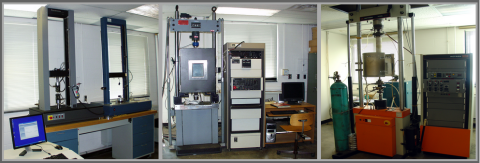Reliability and Lifetime Performance of Materials Systems
Materials systems need to perform reliably throughout their entire lifetime—and the longer their lifetime, the more useful they are. By studying the way systems perform, degrade and fail over time, we can optimize the systems we build to work better and longer. Utilizing data science and modeling, we integrate measurements of structural evolution to study and explore the properties of interface-rich materials, which result in the ultimate lifetime of materials systems. By replicating in the lab the lifetime wear of stressors such as sun, heat, moisture and even the complex landscape within the human body, we can track and predict how different systems will degrade over time, and how their performance will be affected.
Looking across materials systems, from metals, polymers, ceramics and composites, our research has advanced the performance of thin films for photovoltaic solar panels, catheter wires, brain electrodes, building envelopes, steel alloys and more. We determine which mechanism dictates the lifetime performance and assess how to strengthen the weakest link. From single-crystal turbine blades for more efficient wind turbines to transparent conductive oxides for devices, and even ensuring the reliability of additively manufactured parts produced in high-volume runs, we develop materials solutions that make a difference. We combine perspectives of how old materials have aged in the field with predictions of how new materials will perform years in the future.
Institutes, centers and labs related to Reliability and Lifetime Performance of Materials Systems
Faculty who conduct research in Reliability and Lifetime Performance of Materials Systems
Laura Bruckman
Jennifer Carter

Mark De Guire

Roger French

Peter Lagerlof

John Lewandowski







